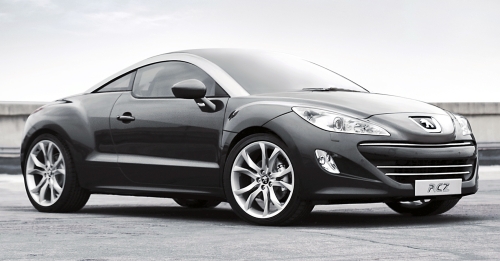Double Wishbone Suspension by Peugeot 908RC
The new model of 908RC.the ultimate by Peugeot is one of the best sell car now which are having comfortable driving. This Peugeot 908 RC is one of the model of Peugeot which are using drop link, double wishbone type suspension for front and rear suspension .The suspension was derived by the double wishbone from Peugeot 407.
The design of the 908 RC creates a particularly low-lying exterior body with a stylish tapered design at the front of the vehicle. Its proportions create an elegant and dynamic statement. Sitting on large diameter 20 spoke alloy wheels the overall effect is that of a big cat, from the nose at the front, to the tip of the rear light
In the great tradition of Peugeot concept cars, the 908 RC is a unique model conceived in the inner sanctum of the Peugeot Design Centre. The vehicle is built around a pre-impregnated carbon composite and vacuum-polymerized aluminum honeycomb structure. The rear section is a self-supporting shell incorporating a sub-frame consisting of a tubular structure on which the engine and suspension are assembled.
In the great tradition of Peugeot concept cars, the 908 RC is a unique model conceived in the inner sanctum of the Peugeot Design Centre. The vehicle is built around a pre-impregnated carbon composite and vacuum-polymerized aluminum honeycomb structure. The rear section is a self-supporting shell incorporating a sub-frame consisting of a tubular structure on which the engine and suspension are assembled.
Component Identification
The suspension strut is attached to the lower wishbone and gives the necessary vertical support. Low installed height and great with between the left and right side characterize this suspension design and make particularly advantages and sporty suspension possible. The double wishbone suspension takes up little room and appropriate tie road layout prevents severe load-reversal reactions.The trailing-link double wishbone suspension consists of a hollow-cast trailing link that also carries the wheel and upper and lower wishbone of particularly economical design. The spring is located on the trailing link a head of the wheel centre; the shock absorber is behind it. This compact layout occupied very little space and is used on lower mid side cars with four- wheel drive.
System Operation
This firm, yet agile system hugs the road surface for a more exhilarating drive. Again, camber and toe changes have been designed to ensure that the tyres remain firmly planted on the ground during body roll or when driving over rough roads. The stroke has been used to its full capacity for more agile contact and each minor detail from the road surface is passed through to the suspension to ensure that the vehicle remains stable when turning. In addition, shocks received when driving over bumps are absorbed smoothly, while the use of large sub-frame bushes and the extended wheel stroke bring a completely new approach to overall ride comfort.
Benefit of Double Wishbone
The length of upper and lower arm, vertical suspension movement result in an increased in negative chamber- tire on outside of a turn stay in better contact with the road because negative chamber gain that occur as the body role help to make sure that the contact patch of the tire is a large as possible. Rigidity of the system prevent deflection during hard cornering which keep the steering and wheel alignment constant. Length of arm can be specifically design of the car.Those arm can be mounted various angle to the ground.



